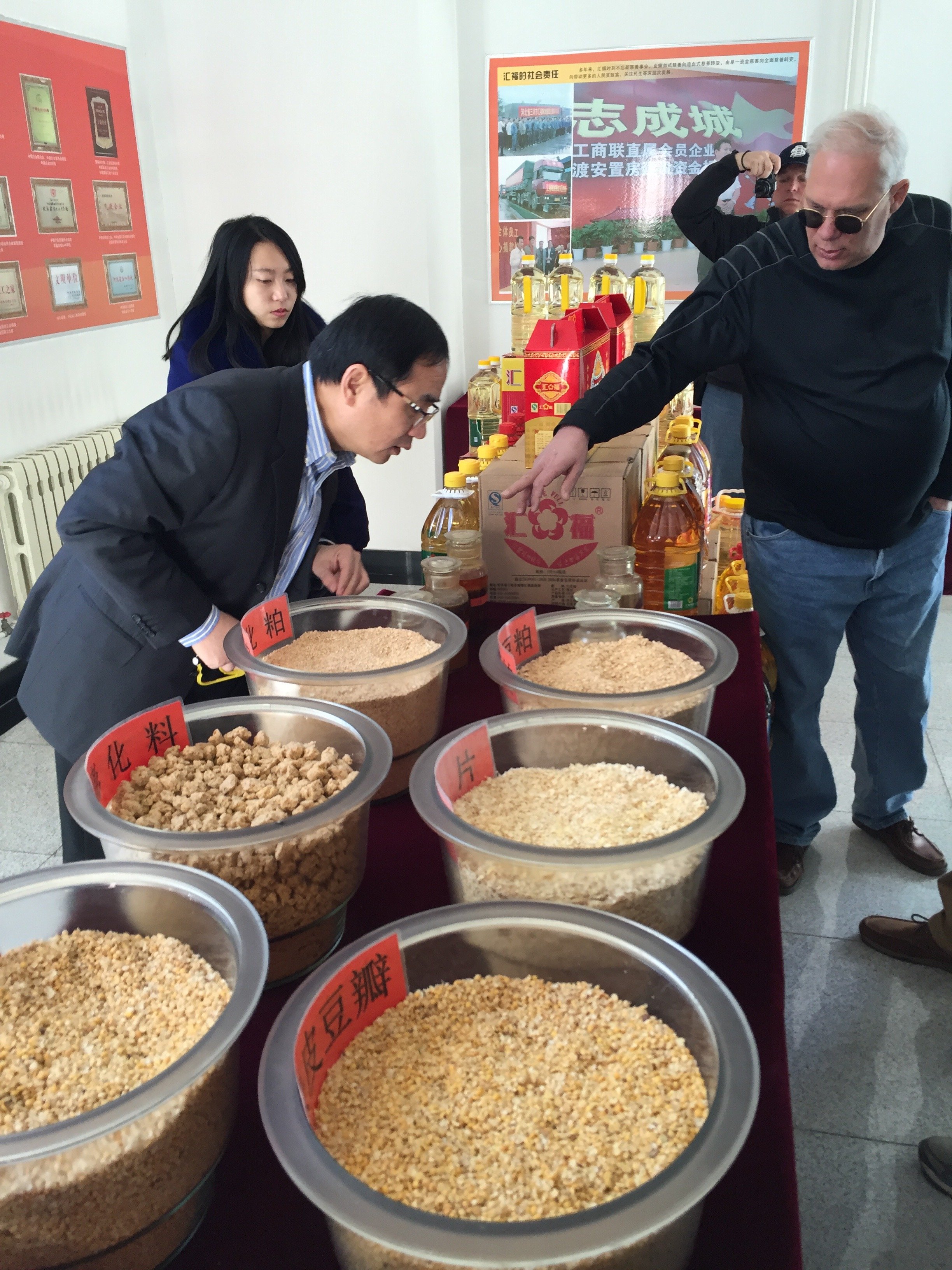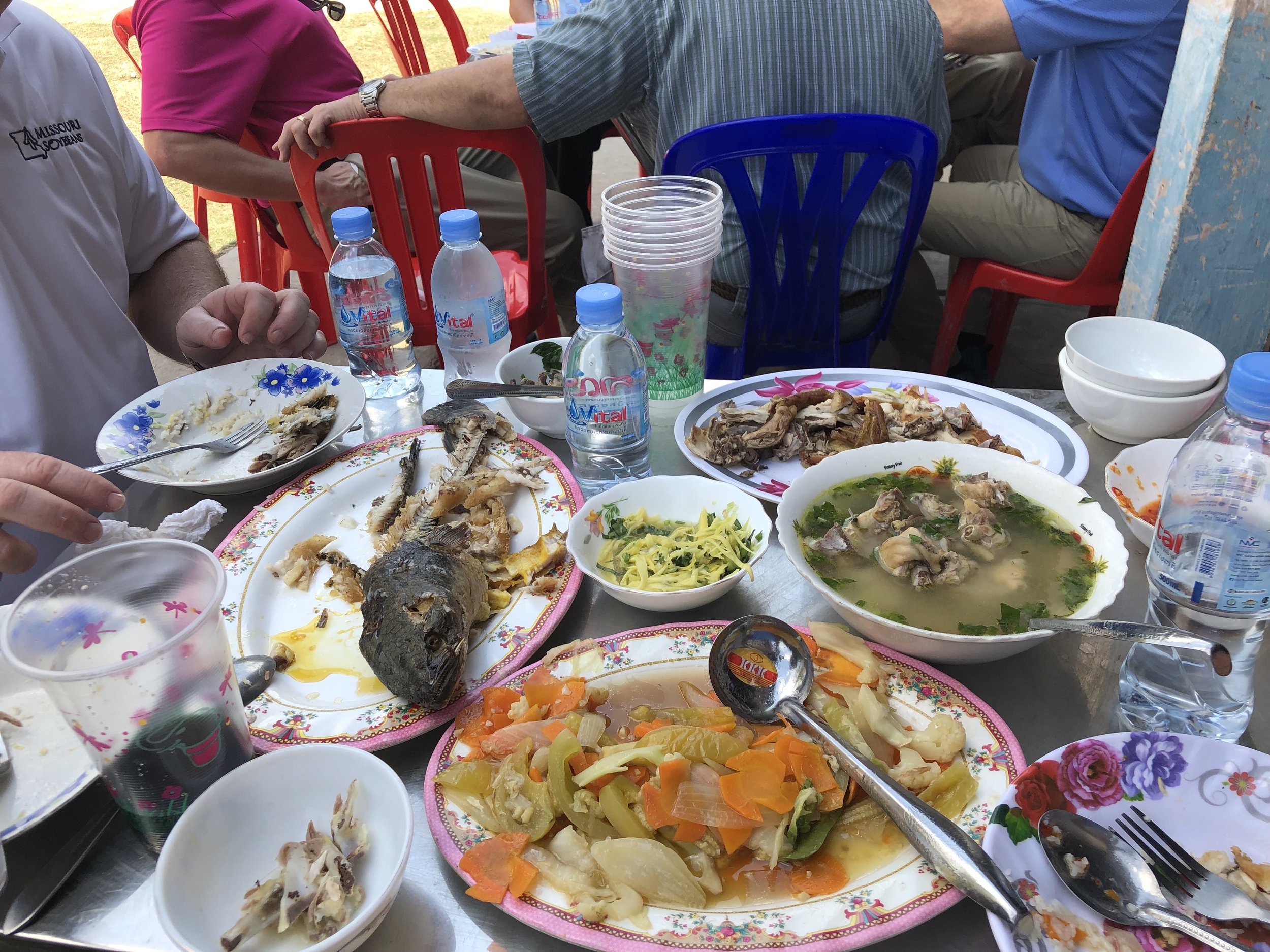Reminiscing on Soybean Trips with Craig Converse
Soybeans from South Dakota travel all over the world with the help of members of the South Dakota Soybean Checkoff who visit trading partners from other countries on behalf of South Dakota soybeans. South Dakota Soybean Council member Craig Converse reminisced on some of his travels and shared stories from the work he does in other countries for South Dakota soybeans.
Q: When did you start traveling with the SD Soybean Checkoff?
A: I first traveled with the Soybean Checkoff on a “See For Yourself” trip with other SD soybean producers to the Pacific Northwest when I was elected to the board. We visited ports such as Greys Harbor, where soybeans and soybean meal are loaded onto ships heading for China and other Asian countries. Trains from the western soybean-growing region, including South Dakota, are unloaded onto the ships at these ports. It only takes 20 days to ship beans from SD to China through these ports.
Q: Where have you traveled for soybean business trips?
A: I also traveled on another “See For Yourself” Trip to Atlanta, GA, where we learned about poultry production and to New Orleans to learn about how barges are used to ship soybeans down the Mississippi River and loaded onto ships at the port of New Orleans. I have traveled on trade missions to France, Spain and Romania to learn about how consumers in Europe react to GMO’s and how best to educate consumers in the USA about our modern farming practices and the safety of our food system. This trade mission led to the Hungry for Truth campaign.
I traveled to China on a See For Yourself trip to learn about the soybean demand in China and meet with soybean importers and end-users such as feed mill operators to educate them on the benefits of buying soybeans through the Pacific Northwest and how the quality of our soybeans can help their livestock through higher essential amino acid (Better Quality) content in our “Northern” beans.
I participated in a trade mission to China with the SD Soybean Council to meet with soybean buyers and learned about China’s agriculture systems. A trade mission to Japan with the US Meat Export Federation (USFEF) helped me learn about how US meat is exported to Japan and marketed there. The trade mission showed us how the competition from Australia and other countries affect our market there.
I participated in a trade mission to Mexico and visited with end-users of our soybean meal. We learned how they feed meal to laying hens and other livestock. On a trade mission to the Philippines and Indonesia, I thanked soybean buyers and met with potential buyers. We educated them on how we sustainably produce soybeans on our family farms.
On my last trade mission to Asia, I traveled to Cambodia and Myanmar with The World Initiative for Soy in Human Health (WISHH). We witnessed how new markets for soybeans are developed by creating demand for our high protein products through local family fish farms and tofu production.
Q: What’s been your favorite trip and why?
A: I can’t pick out a favorite trade mission because every trip was so educational and productive for developing new markets or relationships with soybean buyers around the world. These trips are absolutely necessary for Soybean Council members to understand how best to invest soybean checkoff funds for the benefit of our hard-working producers.
As a soybean producer, it’s good to see and understand how soybeans are marketed and shipped around the world. By meeting with the end-users, such as feed mill owners, you get an understanding of their needs and how best to meet those needs.
Q: What does a typical day look like for you on a trip?
A: A typical day starts like any day you go to work. Meetings are scheduled with a soybean purchaser to explain how our soybeans will be beneficial to their business or tour a processing facility to understand what products our soybeans are being used for such as meal and oil or livestock feed. We may tour a livestock feeding facility or a livestock processing plant. It all just depends on what is important in the region we are visiting to learn the most about that market.
Q: What are some memories from these trips that you’ll never forget?
A: One memory that I enjoyed was in Cambodia where we visited a farm that raised fish in ponds. The family was so excited to have us visit and see their farm. They made us a traditional lunch with fish, chicken, and vegetables they raised and prepared that morning. They had no refrigeration so I know it was very fresh. It’s making friendships and connections like these with people who then seek out American produced grain because we have that relationship.
To learn more about South Dakota soybeans, read our blog on Past, Present, and Future with Maddie Mack, Jordan Scott and Hungry for Truth.






